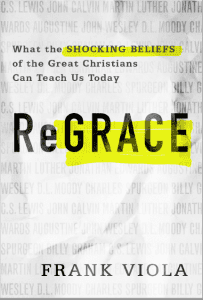Born in 1983, I fall smack dab in the middle of the 20-somethin’, 30-somethin’ generation that has been the source of a great deal of pearl-clutching by American religious leaders of late. The source of their concern—as Naomi Schaefer Riley addresses in her latest book Got Religion? How Churches, Mosques and Synagogues Can Bring Young People Back—is that millennials have lost their faith, a fact effectively suggesting that—unless some kind of intervention takes place—there may be no upcoming generation of religious citizens to replace the aging crowd currently filling the pews. Riley suggests the extent and severity of the exodus by referencing oft-cited studies like the 2012 Pew Forum of Religious Life report, which calculated that 1/3 of American adults under age 30 do not claim a religious affiliation; the 2007 Lifeway Research study that found 70% of Protestants aged 18-30 who attended church on a regular basis in high school failed to attend even occasionally by age 23 and still hadn’t returned by 30; and the 2013 Barna Group survey which discovered that 65% of Catholic-raised young adults report declines in their religious activity.
What is unique to Riley’s text is that she attempts what she calls an “ecumenical” approach to alleviating the crisis of millennial faith: because there have been reported declines in interest by millennials in the Christian, Jewish, and Muslim religions and because she has noticed—through extensive interviews and community observations—similar concerns expressed about millennials by a diversity of religious leaders, her hope is that a common set of principles for drawing this generation back might be developed via an examination of the best practices within each religion. Taking seven different communities—Islamic, Catholic, Jewish, Mormon, the Black Church, Presbyterian, and Methodist—she describes various efforts that have proved effective: the Presbyterian Redeemer Church, the Muslims Establishing Community in America (MECA) organization, the Alliance for Catholic Education (ACE) program, the Jewish Birthright NEXT program, the Mormon Young Single Adult (YSA) wards, the Black Church’s First Baptist Church of Lincoln Gardens, and the United Methodist Church’s Charlotte ONE collaboration. Her conclusion is a set of general guiding principles on how millennials might be drawn back into religious affiliation:
“Young adults want community. They want a neighborhood. They want a critical mass of people their age. But they want to see older people and younger people in their religious institutions too. They want a way to serve, and many of them want a way to serve sacrificially for longer periods of time. They want the racial and ethnic diversity of the country reflected in their religious community. They want a message (in English) that resonates and helps them tackle the practical challenges they face, of which there are many. They want to feel welcome whether they are single or married. And while they may appear to be experiencing an extended adolescence, when they are given responsibility, they are often inclined to take it.”
Riley’s book will certainly be useful to religious leaders who are interested in looking at how other ministries have strategized to draw in millennials. I found the greatest strength of her work to be the on-the-ground research: the interviews with millennials themselves and the religious leaders who are concerned about the generation and actively working to attract them.
I did, however, have a few hesitations about Riley’s approach and the ultimate form such an approach takes in the text:
(1) While Islam and Judaism each receive a chapter, this is a book that primarily references and discusses Christianity. The vast majority of the data gathered, sources cited, and case studies presented deal with the Christian population. This may well be because more studies are available to be cited on this group, I am not sure, but it is worth noting that while the title suggests each religion will be treated and studied equally, Christian examples dominate the text.
(2) I am not entirely convinced that the crisis of the millennials is such a crisis. Bear with me. Globally, humanity is actually becoming more religious. According to the Center for the Study of Global Christianity’s June 2013 report “Christianity in its Global Context, 1970-2020,” between 1970 and 2010, the world population rose from 82% religious to 88%. Christianity’s current growth rate is 1.38%. The largest increases in Christianity, however, are taking place in the global South (while declining as a percentage of the population in the global North): in 1970, 41.3% of all Christians were from Africa, Asia, or Latin America; by 2020, if this rate of increase continues, it is anticipated to be 64.7%. While in America, we are seeing reports of the increase in “nones” (unaffiliated citizens who select “none of the above” when identifying themselves on surveys about religion), Christianity will likely increase from 38.7% of the African population in 1970 to 49.3% in 2020, and in Asia, Christianity is growing over twice as quickly as the general population. So with this in mind, interpretations of reports and polls on American religion that sound alarms of dire straits for the state of faith without mentioning the global trends have always seemed slightly ethnocentric to me. Certainly, at least from my own Christian perspective, the soul of each individual American millennial matters greatly; however, I can’t help but wonder if the persistent and dramatic headlines proclaiming the demise and failure of the American church don’t contribute to pushing this generation further away. After all, who wants to hop aboard a sinking ship? Putting the data into the context of a global view might not only aid in reviving interest in American religion but could inspire the interest in global relief and social justice efforts that—as Riley keenly observes—fascinate and attract millennials, projects that often accompany the work of missionaries abroad.
(3) Having spent the past four years studying digital evangelism and online ministries, I find Riley’s claim that technology is of minimal importance in terms of drawing millennials to church (and that, in fact, “[she] could not find one example of a technological innovation that brought someone into one of these religious institutions or an instance in which it convinced them to stay”) somewhat difficult to accept. Besides the fact that during a personal crisis of faith I experienced as an undergraduate in college it was largely the plethora of rich resources and information about Christianity that various church institutions maintained online as well as the willing chat room and email conversations with pastors and fellow believers that helped reaffirm the validity of my beliefs, and besides my continued participation in religious Facebook and Twitter communities (“church” online, to my mind, though not physical), I personally have begun every new church search I have embarked on in the past decade with a Google search and have always found the most compelling congregations—the ones I visit first and the ones I ultimately stay at—to be the ones that also maintain vital online communities. At my current church, for example, the pastor posts inspirational or thought-provoking quotes from the Bible or Christian thinkers throughout the day and is available for online conversations both public and private. Such a resource is invaluable and a large part of why this church maintains my attendance and membership. On a larger scale, one need only look at the number of conversions reported by internet ministries like Global Media Outreach or the Billy Graham Evangelistic Association’s online outreach (and the testimonies available from converts, many of whom are young adults) to see the importance of technology for growing a religion. The impact of technology for expanding the church globally is even more dramatic, and many of these digital ministries are targeted specifically at millennials, who are tech savvy and already involved in online communities. The incredible work being done by churches, pastors, missionaries, and lay individuals online to draw people to Christianity is no small oversight and only makes sense if Riley’s goal is literally to offer only strategies that will draw the physical bodies of millennials within the physical walls of religious institutions. If this is indeed the case, at least from a Christian perspective, though it is a good goal, it is not enough and falls short of our ultimate goal of the redemption of individual souls. This is not to say that we cannot seek out both physical bodies and changed hearts (indeed, the two should really go hand in hand), only that we should be cautious of seeking out the success of an “institution” over bringing the Gospel to individual lives. So to the extent that this text focuses on institutions, Christian readers at least might find it limiting. It is worth noting though that the focus on institutions was likely a necessary move: if, as Riley hopes, her goal is to find an ecumenical approach to attracting millennials, the easiest point of commonality between religions on which to build an argument is that they are all institutions, a point of stasis which requires these institutions’ diversity of theological goals and beliefs to be subordinated.
(4) Though I cannot speak for Islam or Judaism, I’m always a little skeptical of how-to or advice books on how to draw any particular group into the church. Yes, Paul encourages us to be all things to all people in the hopes that we might save some, effectively endorsing different “marketing techniques” for the Gospel (an approach which, as a professor of Rhetoric, I can appreciate) and also effectively encouraging us to take part in very important preparations for evangelism like learning a new culture’s language and traditions before attempting mission work. However, while certainly at least the Christian church would do well to learn from Riley’s point that the flashiest churches with the biggest worship bands, most movie nights, best Sunday-morning coffee, and coolest interior design are not always the most appreciated by millennials—that instead millennials appreciate multigenerational and ethnically-diverse communities and opportunities for community service—I would say that perhaps even more significant is that the Gospel itself be presented to them in a way that is honest and relevant. In my experience, millennials perceive the church to be a source of dogma rather than open conversation, and millennials—as our quick and easy adoption of all that is social networking suggests—want to have conversations with lots of room in them: room to doubt, room to challenge, room to play devil’s advocate and disagree respectfully and change our minds without judgment. We want to feel free to ask hard questions about issues like homosexuality and evolution. We want to receive intelligent answers. Many of us were never taught apologetics and have given up on faith simply because we were trained well in faith-as-a-feeling but never shown faith-as-a-defensible-and-intellectual system of belief. We don’t want a cherry-picked version of the Bible; we want to be taught the whole thing, and we want to know why the parts that don’t make sense to us (Old Testament dietary and clothing laws, anyone? That story where Lot sleeps with his daughters, and no one gets called out on it, anyone? Bueller? Bueller?) are relevant. When Riley mentions Tim Keller’s Redeemer church in New York as a successful model of how millenials might be attracted, one of the reasons why that she doesn’t dwell on that I believe is central to why his church plant has thrived is because the content of his sermons is so compelling, honest, intellectual, reasonable, and inspired. He deals with difficult Bible passages, passages I’ve never heard other pastors touch. In my Rhetoric classes, I always tell my students that they should not be afraid to challenge even their most deeply held beliefs because the Truth withstands all challenges. And I think this is the approach millennials—the generation more educated than any prior, more highly-trained in the skepticism and secularism of academia—take to all ideologies they adopt, so it is of the utmost importance that religious leaders be able to share their faith in a way that has depth and that they be able to answer and explore even the most challenging of questions without fear or beating around the bushes. Content—and by “content” I mean the presentation of the biblical text, not theological positions on various issues—needs to be the focus of institutions that plan to attract millennials. We are smart enough to see the gloss of marketing techniques a mile away and will avoid them. We are looking for more than a social club or a gathering of like-minded people or even a volunteer group or a place to serve and be involved in the local community. In addition, it is worth noting that Riley is dealing specifically with how to attract millennials to the institutions of religion—how to actually get bodies in pews—a project which, at least for Christians, is not necessarily the same as attracting millennials to Christ, the latter certainly being the more important endeavor.
Insofar as Got Religion? profiles various religious communities, programs, and organizations of different faiths across America though, it is fascinating and valuable. I learned new things about Islam, Judaism, and Mormonism, and Riley’s primary research—especially her extensive interviews with millennials themselves—will help readers get to know members of this generation a little better. If there is one thing that interfaith efforts cannot have enough of, it’s this type of one-on-one conversation, and Riley is generous in sharing much rich conversation. While Got Religion? does not necessarily provide a definitive ecumenical methodology in response to its promise of defining “how churches, mosques, and synagogues can bring young people back,” (indeed, even some of the groups she profiles have achieved only varying degrees of “success” in attracting millennials), it does provide insight into methods and models being tried. As long as we can keep in mind that this is a text most applicable to the American religious scene and that millennials are in most ways no different than any prior generation in terms of their fundamental spiritual needs, this text will prove a valuable resource for interfaith discussions on marketing the institutional aspect of religious faith.
For more conversation on Got Religion? – and to read an excerpt, visit the Patheos Book Club here.
 Amber M. Stamper holds a Ph.D. in English (Rhetoric and Composition) and is an Assistant Professor of Language, Literature, and Communication at Elizabeth City State University in North Carolina. Her research and publications center on religious rhetoric and communication, especially issues of Christian evangelism and the digital church.
Amber M. Stamper holds a Ph.D. in English (Rhetoric and Composition) and is an Assistant Professor of Language, Literature, and Communication at Elizabeth City State University in North Carolina. Her research and publications center on religious rhetoric and communication, especially issues of Christian evangelism and the digital church.














